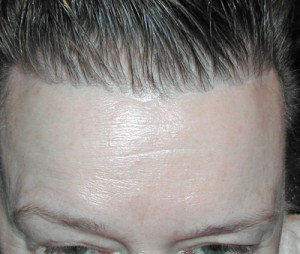When it comes to forehead rejuvenation a variety of browlifting strategies exist. Three of the browlifting methods use a superior or scalp incisional access to do the procedure. The most popular of these is the endoscopic technique which uses a few small scalp incisions and an epicranial tissue shift to create its brow elevation effect. It is popular because of a lack of significant incisional lengths even though it does also result in some forehead lengthening.

In the January 2013 issue of Plastic and Reconstructive Surgery, an article was printed entitled ‘Cessation of Hairline Recession following Open Forehead Rejuvenation’. Over a 15 year period, 31 patients had browlifts done using either the endoscopic (17) or open pretrichial incision (14) approaches. Measured photographs of eyebrow to hairline distances were done at 1 and greater than 8 years after surgery and compared to other cosmetic surgery patients who did not have forehead rejuvenation. Their results showed that over the long-term only the pretrichial group had a stable or improved hairline position without any signs of recession. No separation was seen between the scar and the hairline in the pretrichial incision patients.
This study is very relevant to not only pretrichial browlifts but other procedures that use incisions along the hairline such as a hairline lowering/advancement surgery for forehead reduction. Whether it is a woman or a man (but particularly in men), there is always the concern that hair loss may occur along the incision from surgical trauma or that long-term hairline recession may occur. These findings in this paper allay those concerns and suggest that the incision may have some protective effect in the long-term for follicular preservation…and intriguing but as of yet unexplainable biologic effect.
Dr. Barry Eppley
Indianapolis, Indiana


